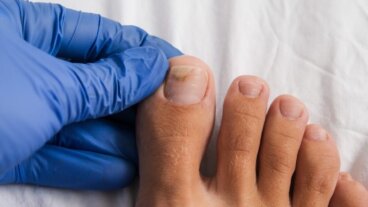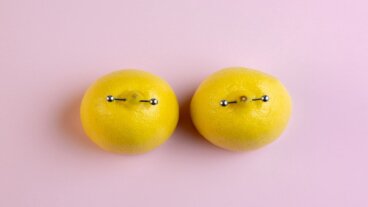Chopping Boards: How to Choose the Right One for Your Kitchen

One of the utensils that do not receive much attention, but that play a central role in the kitchen, are the chopping boards. This is the first element to start a meal, since vegetables, meats, sausages or any other food that needs to be cut.
In fact, if the right model is chosen, it can serve a decorative function and can even be used to present certain foods on the table. So, how to choose the most appropriate one? Below, we give you some recommendations and detail which ones are the best for each use. Read on!
What features should good chopping boards have?
There are numerous options when choosing a chopping board. The models vary among different materials, sizes, and functions. To select the most suitable one, certain aspects must be taken into account, such as the purpose of use, the way of sanitization, and your budget.
It’s not the same to look for one to cut meats than one to hang for decorative purposes or to serve at the table. Even so, regardless of which one is chosen, they must have some basic characteristics that guarantee their quality and hygiene.
- Hardness. Make sure that the board isn’t too soft or too hard. The aim is that it has good contact with the knife and does not damage its edge.
- Stability. It’s not recommended that it be too slippery. On the contrary, it should have good stability. All these aspects guarantee the comfort of use and durability of the knife.
- Size. Ideally, it should have considerable dimensions to separate the waste from the cuts. This also depends on the size available on the kitchen countertop.
- Materials. There are many different materials for worktops, such as plastic, marble, or different types of wood. The choice should be subject to the function to be given.
We think you may be interested in reading this, too: How to Implement Low Cost Decoration In Your Kitchen
Which chopping boards to choose for your kitchen?
To choose the right board, you have to know all the available options. Some are better suited for certain cuts, some for decoration, and some for serving. Therefore, the choice depends on the desired functionality and the available ways of sanitizing.
Wooden boards
One of the most widely used options is wooden boards, due to their aesthetic, stable, and durable character. They are available in various types of wood, such as oak, beech, maple, cherry, olive, and bamboo. Generally speaking, they are stronger and more comfortable than those made of plastic or other materials.
In addition, they work for cutting without affecting the sharpness of the knife or for presenting food in an aesthetically pleasing way. However, hygiene is a fundamental aspect to take care of the object and to maintain healthiness.
Many scientific studies, such as the one published by the Journal of Food Protection suggest that this surface can absorb moisture and even some contaminating bacteria.
It’s important to wash and disinfect them as soon as they are finished using them so that bacteria do not accumulate in the pores, especially when raw meats have passed through their surface.
Regular washing can be done with warm water and detergent, while weekly disinfection with white vinegar or baking soda is recommended. They should not be put in the dishwasher, as this can damage or deform them.
As regards wood, beech wood is the most common and economical. Meanwhile, olive wood is characterized by its quality and higher cost. The bamboo ones have good resistance and are more environmentally friendly.
Plastic chopping boards
The other common material used to make chopping boards is plastic, especially polypropylene. They offer good resistance, comfort, and different color options. In addition, they do not affect the sharpness of knives. But although they are cheaper than wooden ones, they tend to be less durable and wear out faster.
In terms of healthiness, they are believed to accumulate fewer bacteria than wooden ones. However, the impact of knives creates holes into which these microorganisms can enter.
A study in the scientific journal Journal of Food Protection compared the two materials by inoculating them with bacteria. The study concluded that, under humid conditions and after 12 hours at room temperature, bacteria could recover more than on wooden boards.
Therefore, hygiene and disinfection are also essential. In this case, they are dishwasher safe, although this isn’t the most recommended action. Finally, it’s important to replace them when wear is evident.
Other materials
Beyond wood and plastic, there are options for boards made of other materials. Although they do not have the same functionality, they have aesthetic advantages.
- Marble. They are very pleasing to the eye, but as they are harder than the previous ones, they damage the edge of the utensils.
- Stone. Combinable with other elements of the tableware. They work more for decorative purposes.
- Acrylic. Although it also dulls knives more frequently, it’s very resistant.
- Glass. A choice that brings elegance to the kitchen or food presentation.
Tips for choosing chopping boards
When selecting a board, consider its primary function. This can vary if you preferred to decorate a countertop, to hang or just to chop food. If the main idea is to display it, then materials such as marble or glass are a good option.
Some include handles that can be uncomfortable for cutting, but provide aesthetics and ease of hanging. Another aspect to consider is the size. There are variants of 30 centimeters long and up to 70 centimeters, while the thickness can range from 1 to 5 centimeters.
In professional kitchens, a color code is applied that divides the boards according to what is placed on the surface. This works to avoid cross-contamination. Although it’s not necessary to have one of each color, it’s advisable to have at least two; one for raw food and one for cooked food.
- Green. Fruits and vegetables.
- Blue. Fish and seafood.
- Yellow. White meats.
- Red. Red meat.
- Brown. Cured meat and sausages.
- White. Bread and cheeses.
- Black. To serve.
Like this article? You may also like to read: 6 Common Mistakes to Avoid when Decorating the Kitchen
Cleaning chopping boards
Cleaning this utensil is essential to maintain sanitation and avoid cross-contamination. A wash with detergent and a sponge is sufficient, as long as this is done as soon as it’s been used.
Chopping boards, especially those made of wood and plastic, can deteriorate more quickly with water, so it’s recommended to dry them immediately. Another important aspect is where they are stored, since if they remain in closed places, such as cupboards or drawers, they’re likely to accumulate moisture.
To remove the bad smell, salt and lemon juice can be applied to them, and the surface rubbed until they are completely covered.
A study in the scientific journal Letters in Applied Microbiologya study in the scientific journal Letters in Applied Microbiology, claims that oxidizing electrolyzed water works as a disinfecting agent for plastic and wooden boards.
Chopping boards, a choice between aesthetics and functionality
The choice of boards in the kitchen is subject to the dimensions available, the function, and the budget. If possible, it’s advisable to use color coding, so that processed foods aren’t mixed with raw meats.
It’s important to carry out cleaning and disinfection actions, due to the permanent contact of this object with raw foods. It’s a utensil exposed to cross-contamination, an aspect that must be avoided under any health claim.
All cited sources were thoroughly reviewed by our team to ensure their quality, reliability, currency, and validity. The bibliography of this article was considered reliable and of academic or scientific accuracy.
- Ak, N. O., Cliver, D. O., & Kaspar, C. W. (1994). Cutting Boards of Plastic and Wood Contaminated Experimentally with Bacteria. Journal of Food Protection, 57(1), 16-22. https://www.sciencedirect.com/science/article/pii/S0362028X22020920?via%3Dihub
- Chiu, T., Duan, J., Liu, C., & Su, Y. (2006). Efficacy of electrolysed oxidizing water in inactivating Vibrio parahaemolyticus on kitchen cutting boards and food contact surfaces. Letters in Applied Microbiology, 43(6), 666-672. https://academic.oup.com/lambio/article-abstract/43/6/666/6703731?redirectedFrom=fulltext&login=false
- Kounosu, M., & Kaneko, S. (2007). Antibacterial Activity of Antibacterial Cutting Boards in Household Kitchens. Biocontrol Science, 12(4), 123-130. https://www.jstage.jst.go.jp/article/bio1996/12/4/12_4_123/_article
- Van Asselt, E., De Jong, A., De Jonge, R., & Nauta, M. (2008). Cross-contamination in the kitchen: estimation of transfer rates for cutting boards, hands and knives. Journal of Applied Microbiology, 105(5), 1392-1401. https://academic.oup.com/jambio/article-abstract/105/5/1392/6719968?redirectedFrom=fulltext&login=false
- Welker, C., Faiola, N. A., Davis, S., Maffatore, I., & Batt, C. A. (1997). Bacterial Retention and Cleanability of Plastic and Wood Cutting Boards with Commercial Food Service Maintenance Practices. Journal of Food Protection, 60(4), 407-413. https://www.sciencedirect.com/science/article/pii/S0362028X22045598?via%3Dihub
This text is provided for informational purposes only and does not replace consultation with a professional. If in doubt, consult your specialist.








